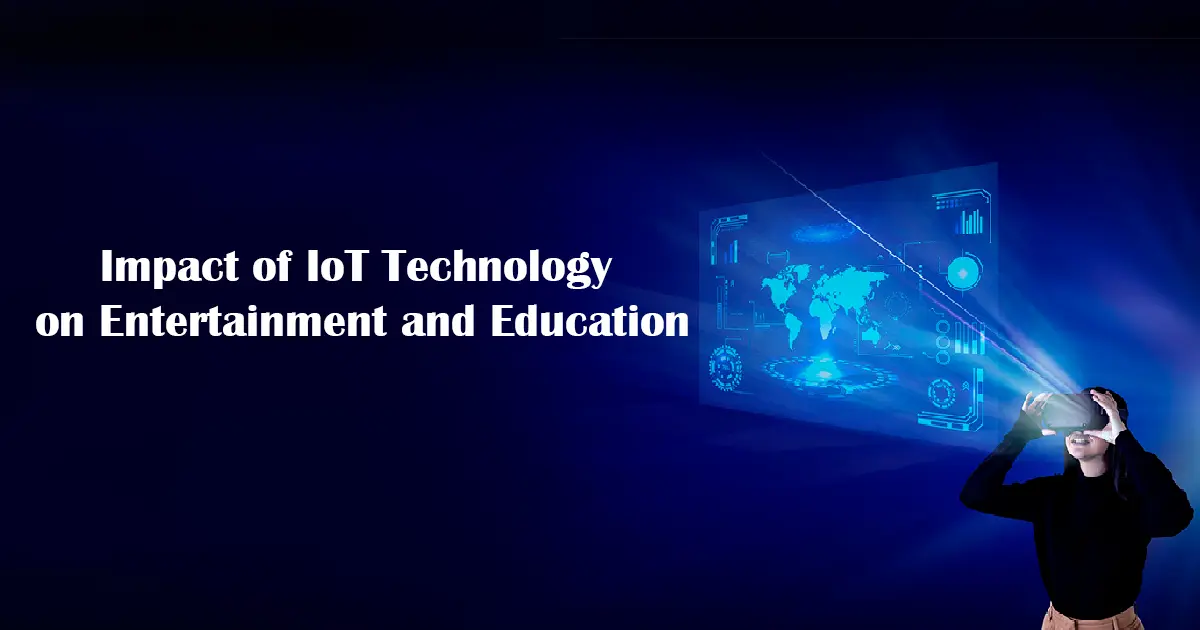IoT in Entertainment
The entertainment industry has always been at the forefront of adopting new technologies to enhance user experiences. Impact of IoT on entertainment is now playing a pivotal role in transforming this sector by making content more accessible, personalized, and immersive.
1. Smart Homes and Streaming Services
IoT has brought significant advancements to home entertainment systems, making them smarter and more integrated. Smart TVs, speakers, and streaming devices are connected through IoT, allowing users to control them seamlessly.
Key Benefits:
- Voice Control and Personal Assistants: Devices like Amazon Echo and Google Home enable users to control their entertainment systems using voice commands.
- Personalized Content Recommendations: IoT devices track user preferences and behaviors to recommend content that aligns with their interests.
- Seamless Connectivity: Integration with other smart home devices creates a cohesive entertainment experience, such as dimming the lights or adjusting the temperature when a movie starts.
2. Virtual Reality (VR) and Augmented Reality (AR)
IoT is enhancing VR and AR technologies, making them more interactive and immersive. These technologies are being used in gaming, live events, and other entertainment forms.
Key Benefits:
- Immersive Experiences: IoT-connected VR and AR devices provide highly immersive experiences, allowing users to feel as though they are part of the action.
- Interactive Gaming: IoT enables real-time data exchange, making multiplayer gaming more interactive and engaging.
- Enhanced Live Events: IoT devices can enhance live events by providing real-time updates, interactive content, and virtual participation.
3. Smart Wearables
Wearable devices like smartwatches and fitness trackers are becoming integral parts of the entertainment ecosystem. These devices collect data on user activities and preferences, offering personalized entertainment experiences.
Key Benefits:
- Fitness and Entertainment Integration: Wearables can sync with entertainment platforms to provide customized workout playlists or track fitness progress while engaging in activities like VR games.
- Real-Time Notifications: Users can receive real-time notifications about their favorite shows, movies, or sports events directly on their wearable devices.
IoT in Education
The education sector is witnessing a paradigm shift with the integration of IoT technologies. These advancements are transforming traditional learning methods into more interactive, efficient, and personalized experiences.
1. Smart Classrooms
IoT is turning traditional classrooms into smart learning environments where devices and educational tools are interconnected to provide an enhanced learning experience.
Key Benefits:
- Interactive Learning Tools: Smartboards, tablets, and other IoT devices make learning more interactive and engaging.
- Automated Attendance and Monitoring: IoT devices can automate attendance tracking and monitor student activities, ensuring better management and safety.
- Resource Management: IoT helps in managing classroom resources efficiently, such as adjusting lighting and temperature based on occupancy.
2. Personalized Learning
Impact of IoT on entertainment enables personalized learning experiences by collecting and analyzing data on students’ performance and preferences. This helps in tailoring educational content to meet individual needs.
Key Benefits:
- Adaptive Learning Platforms: IoT-powered platforms can adapt the curriculum based on the learner’s progress and understanding, ensuring a customized learning path.
- Real-Time Feedback: Teachers and students receive real-time feedback on performance, enabling timely interventions and support.
- Learning Analytics: IoT devices collect data that can be analyzed to understand learning patterns and improve educational strategies.
3. Remote Learning and Collaboration
The COVID-19 pandemic has accelerated the adoption of remote learning, and IoT is playing a crucial role in making this transition smoother.
Key Benefits:
- Connected Devices: Impact of IoT on entertainment connects various devices, such as laptops, tablets, and smartphones, enabling seamless remote learning experiences.
- Collaborative Tools: IoT-powered collaborative tools allow students and teachers to interact and collaborate in real-time, regardless of their location.
- Enhanced Accessibility: IoT ensures that educational content is accessible to students with disabilities, providing equal learning opportunities for all.
4. Smart Campus Solutions
IoT extends beyond classrooms to entire educational institutions, creating smart campuses that enhance safety, security, and operational efficiency.
Key Benefits:
- Campus Security: IoT devices like smart cameras and sensors enhance campus security by monitoring activities and detecting anomalies.
- Energy Management: IoT helps in managing energy consumption efficiently, reducing operational costs and promoting sustainability.
- Asset Tracking: Educational institutions can track valuable assets, such as laboratory equipment and library resources, ensuring their optimal use and maintenance.
Challenges and Future Directions
While IoT offers numerous benefits, its implementation in entertainment and education comes with challenges that need to be addressed for its full potential to be realized.
Challenges:
- Data Privacy and Security: The collection and transmission of vast amounts of data raise concerns about privacy and security. Ensuring that IoT devices and networks are secure is paramount.
- High Implementation Costs: Setting up IoT infrastructure can be expensive, which might be a barrier for some institutions and organizations.
- Interoperability Issues: Ensuring that different IoT devices and systems can work together seamlessly is crucial for effective Impact of IoT on entertainment implementation.
Future Directions:
Despite these challenges, the future of IoT in entertainment and education looks promising. Emerging trends and advancements include:
- 5G Technology: The rollout of 5G networks will enhance the connectivity and performance of IoT devices, enabling faster data transfer and more reliable connections.
- AI Integration: Integrating AI with IoT will provide even more personalized and intelligent experiences in both entertainment and education.
- Blockchain for Security: Blockchain technology can be used to secure IoT networks, ensuring the integrity and privacy of data.



